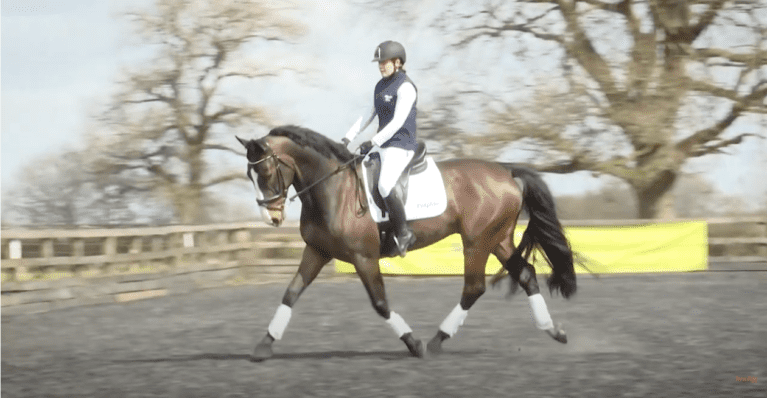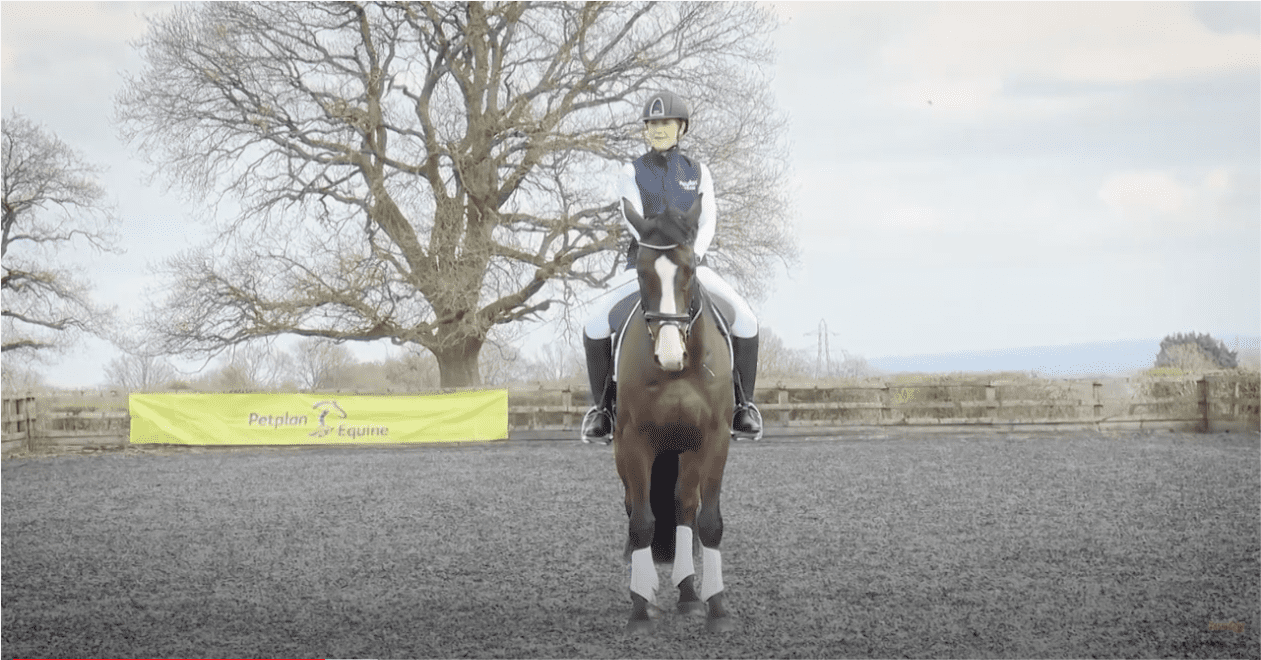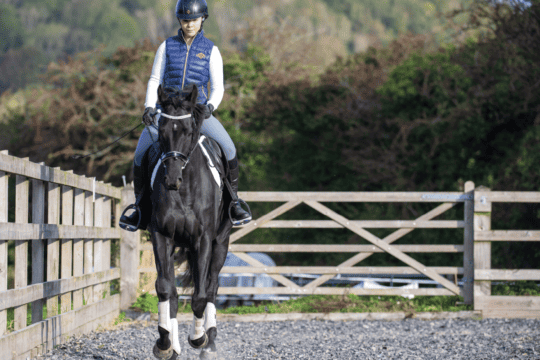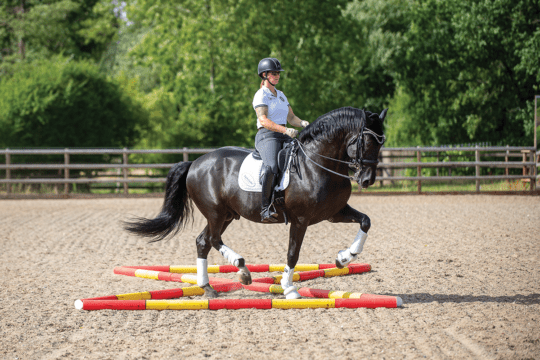If you like the idea of riding a dressage test to music, our experts’ advice will give you all the information you need to get started

Our experts
Alice Oppenheimer is a Grand Prix dressage rider who owns Headmore Stud in Hampshire. She has produced many horses from the start of their careers to top level and regularly competes in dressage to music classes.
Gaynor Colbourn is a classically trained pianist who has produced unique competition music for some of the world’s best-known dressage riders. In 1980, along with Jennie Loriston-Clarke, she originated dressage to music as we know it today.
Our models
Karin Themsen rides Icor HBZ Z (Echo)who was bred to show jump. Karin does some jumping with him, but also enjoys flatwork.
Have a go at dressage to music
Dressage to music is not only fun to take part in, but people love watching it, too. The good news for riders of all levels is that anyone can have a go, and if you want something to aim for, why not make it the Petplan Equine Area Festivals? Launched in the year 2000, this prestigious championship is designed for amateur riders.
If, like a lot of riders, you’re not sure how to get started in dressage to music competitions, we’re here to help. You can either use a specialist company to devise a floorplan and/or your music choices for you, but if you’re reasonably artistic or technical you may be able to do it yourself.
Here, Alice explains the different movements required at Prelim level and how to create an inventive floorplan, while Gaynor reveals how she makes her music choices with the intention of highlighting each horse’s strengths and improving the look of the weaker paces.
Compulsory movements at prelim level
At every level in freestyle tests there are movements which must be performed – if you miss them out you’ll get a zero for that movement on your test sheet.
For Prelim level compulsory movements are…
- medium walk (minimum 20m)
- free walk on a long rein (minimum 20m)
- working trot left and right, to include 20m circles both ways
- allowing the horse to stretch for at least 20m on a 20m circle
- working canter left and right, to include 20m circles both ways
- entry and halt at the beginning and halt at the end of the test.
20m trot and canter circles
To demonstrate a good 20m circle, think of riding a diamond shape, as this helps to ride circles more accurately. Your 20m circle should always cover the whole width of the arena, so if you ride it from B, you must touch the track at E before riding back to B, for instance.
Of course, they must be round – circles never have corners. Therefore, when riding a 20m circle from C, try to avoid getting too deep into the corner. On completion of your 20m circle (back at C) you can ride deeper into the next corner to show the judge you’ve finished your circle and that you know the difference between a circle and a corner.
Trot stretch
You must show a minimum of 20m trot stretching and if you stretch your horse for half a 20m circle you’ll have shown more than enough. The judge is looking for the horse to seek the contact forward and down and to show consistency in the stretch – a bit like free walk, only in trot.
Free walk on a long rein
The horse should stay in an active four-beat rhythm with a swing to his step – the judges want to see purpose, relaxation, consistent stretching and, ideally, a good overtrack (where the hind hooves land in front of the prints left by the front hooves). At least 20m must be shown and free walk can be ridden wherever you like – across the diagonal, down one of the long sides or on a circle.
Medium walk
Once again, the judges are looking for the horse to stay in an active four-beat rhythm with purpose and relaxation.
Echo’s walk isn’t his strong point and if your horse is the same, only show the minimum amount needed for a test. Another tip is to ride the weaker paces further away from the judge (nearer to A) rather than right under their nose at C.
Centre lines and halts
You’ll start your test with a centre line and a halt and finish with a final halt on the centre line. The two halts are marked separately so it’s important to teach your horse to perform straight centre lines and square halts (both front feet together and both back feet together). At Prelim and Novice level your halt transitions can be progressive – through walk – rather than directly from trot to halt.
Choosing the tracks
When Gaynor picks music for a horse, she needs to work out the correct speed for each pace. If the music is too fast, it can make the horse look hurried and if it’s too slow, the horse may appear lacking in energy. Getting it right often means a big difference in marks.
Gaynor also highlights the fact that the right music set at the right speed can make your horse’s weaker paces look stronger. For Echo’s walk, Gaynor set the speed at 96bpm to demonstrate how it makes him appear lacking in energy. Upped to 98, the whole picture was much better. She also demonstrated how an upbeat track will make a lazy horse appear more energetic, which is why she chose Les Miserables for Echo’s walk. Dressage to music choices are all about playing to a horse’s strengths and highlighting them to a judge – it’s showbiz!
Alice and Gaynor’s top tips
Alice says: “When you choreograph your floorplan you really want to think about your horse’s strengths and weaknesses. For example, if your horse is better on the right rein than the left, you could do your right circle at the C end and your left circle away from the judge at A.”
Gaynor says: “Try to think of music that other people wouldn’t use. Material that’s been used by riders over and over again, and should ideally be avoided, includes things like Pirates of the Caribbean or Harry Potter, but basically avoid anything else you’ve heard while watching a dressage to music class – be original.”
Alice says: “At Prelim level you must enter in walk or trot – you can’t canter up the centre line until you compete at Medium level. Whether you come into the arena in walk or trot depends on your horse. Echo, as we said earlier, doesn’t have the best walk, so Karen would be best to start her test in trot.”
Gaynor says: “You’re allowed up to 20 seconds of entry music, then there’s a four second pause while you halt before starting your test. Entry music is not compulsory, but it does add a good first impression. I’d recommend riders add intro music to their test and take a lot of care and attention finding the right track that makes the judge sit up and listen right from the start.”
To find out more about the Petplan Equine Summer Area Festivals and how you can enter, visit britishdressage.co.uk/petplan-equine-area-festivals-hub/ and petplanequine.co.uk/area-festivals/freestyle-to-music.asp
Ready to take it to the next level? Find out more about riding a novice dressage to music test here.














